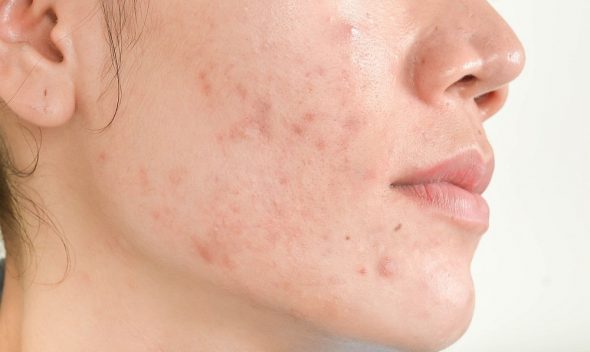Permanent hair removal: a concise overview to make your best choice!

In general, there are 3 methods of permanent or long-term hair removal. How do they work? Are they really effective in the long term and, above all, without risk? Dr. Elix makes the point providing a natural alternative for better performances!
To fully understand how these techniques work, we must first look at the anatomy of the hair.
Hair is born in the hair follicle, a sort of small pocket a few millimeters deep under the skin. At its base is the root, from which the hair forms. There are also melanocytes, cells that secrete a brown pigment, melanin. It is this pigment that is targeted by two permanent hair removal techniques: Laser hair removal and IPL hair removal (Intense Pulsed Light). This involves sending a beam of light onto the hair: melanin absorbs this light and transforms it into heat, which has the effect of destroying the hair roots.
The difference between laser and IPL hair removal technique is the energy level of the light beams bombarded on the hair. The laser uses a powerful beam of a single wavelength that destroys the hair root in a targeted manner. Intense Pulsed light, on the other hand, emits several wavelengths of lower energy. Pulsed light machines are therefore of variable power, some simply weaken the hair while others are capable of destroying it.
How many sessions are required:
These two techniques only work on growing hair, which is about 20% of the body’s hair at any given time.
Between 6 and 8 sessions of 20 to 60 minutes each is therefore often necessary to get rid of all the hair capital.
A third technique exists, Electrolysis, but it is much less used because it is necessary to proceed with hair by hair. A needle is inserted at the root and then sends an electric shock to destroy it. Sessions are shorter and must be repeated more frequently!
Are these techniques really effective?
Whatever technique is chosen, “once the sessions are over, no hair grows back in the majority of cases,” they say. However, in some hormone-dependent areas (lips, chin, lower abdomen or chest), more sessions may be necessary and some hairs may grow back a few years later, especially in these areas. This is because some cells may escape destruction and may grow hair again later. That’s why dermatologists prefer to talk about long-term hair removal, not permanent hair removal.
It should be noted that not all of these techniques are effective on all skin types. The ideal candidates for intense pulsed light and the most common lasers are people with clear skin and dark hair. On darker skin types, both techniques can cause burns by reacting with the melanin present in large quantities in the skin.
On the other hand, it is more difficult to treat clear, blond or roux hairs because of their weak pigmentation. Only diode and Nd-Yag lasers can be used on darker skin, Nd-Yag being equally effective on darker skin. As for electrolysis, it can be used on all types of hair and skin, since it does not act on melanin.
Is permanent hair removal safe?
These methods are not carcinogenic: the radiation emitted by the machines is not powerful enough to cause DNA damage, which is a source of cancer.
However, undesirable effects can occur, even if they are rare and often not serious, such as temporary redness, hyperpigmentation or depigmentation, as well as skin burns are also possible, especially when using pulsed light or alexandrite laser on dark skin.
Exposure to UV rays is therefore prohibited 6 weeks before a session and 3 weeks afterward for these two techniques, because tanned skin increases the risk of burns. It seems that winter is by far the best time to get depilated by these techniques.
Please note that if the machine lacks power, the light will just heat the hair, and heating it can turn it into a big black/mature hair! This is called paradoxical regrowth.
Finally, wearing protective goggles is mandatory (except for electrolysis) because the light beam can potentially cause an eye burn.
Finally, it is important to know that this type of hair removal is generally not painful. It may be accompanied by a tingling sensation and a slight burning sensation, sometimes followed for two or three days by the feeling of having had a sunburn.
Contraindications
There are certain contraindications to permanent hair removal techniques, including pregnancy, during which removal of hair from the abdominal and genital area is not possible. Before the session, it is also important to inform the doctor about taking any treatment.
The doctor must also check that there are no suspicious lesions. For example, it is advisable to bypass moles and cover them. This precaution should be taken in salons, as it is not known how certain skin tumors – such as moles – would react to laser treatment.
Is there a natural alternative to permanent hair removal?
Yes, a 100% natural and noble lotion is available with significant anti-regrowth powers, improving the sensitization of the hair follicles to the metabolite concerned, thus providing a definitive or long-term solution.
The promised performances are of the order of 50% to 70% after the first 5 weeks of treatment and can reach 90% to 100% in 6 months of treatment.
Our natural solution, Dr. Elix Hair Growth Inhibitor Expert Lotion, is applied after waxing, or your preferred epilation technique, although we recommend the use of oriental or sugaring wax for its ultimate tolerance to your skin, it is painless and also ideal for sensitive areas.
Our expert natural solution for permanent hair removal (+4 years of durable results) is perfected preferably by the adoption of a lifestyle and a tailor-made Anti-regrowth regimen.
An authentic natural solution that combines the pleasure of a premium beauty routine, a treatment with zero side effects, rather with palpable benefits for beautiful healthy skin and the results of studies on the Anti-re-growth performances of essential oils and plant extracts bio-active molecules.
Dr. Elix – Nature’s Finest Elixirs













Leave a comment